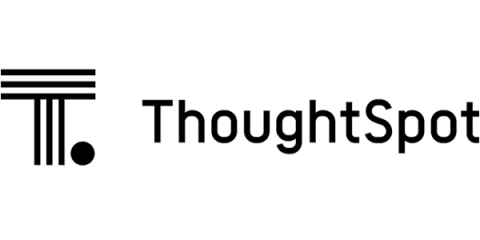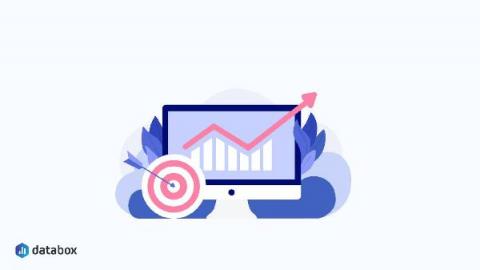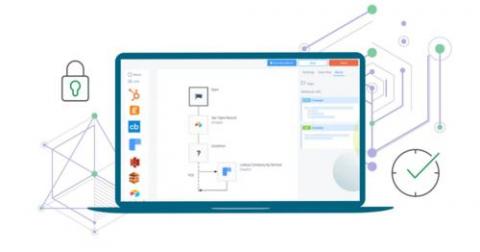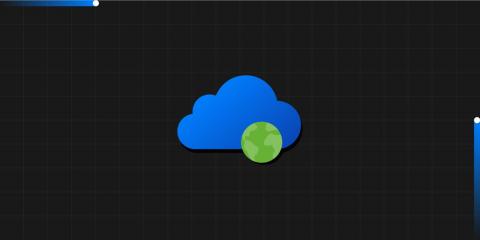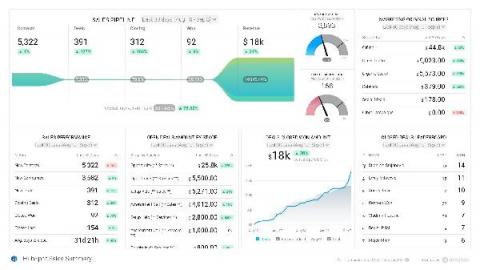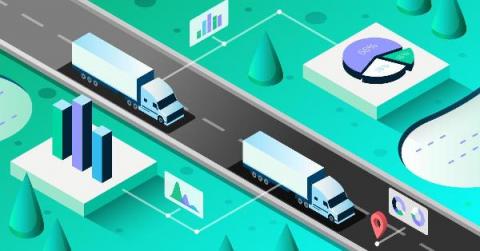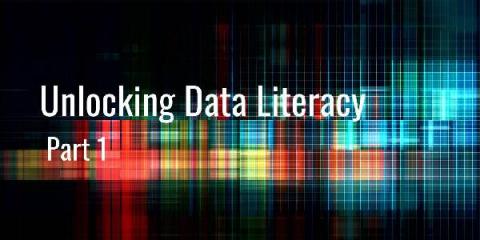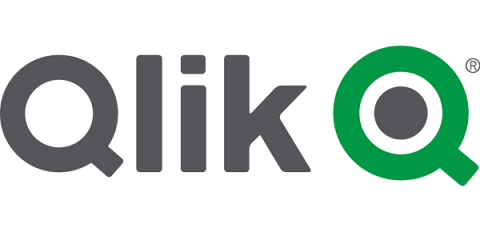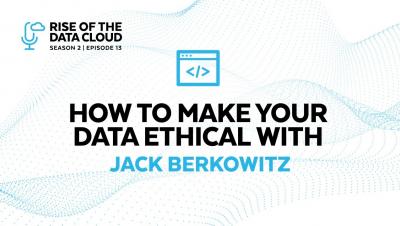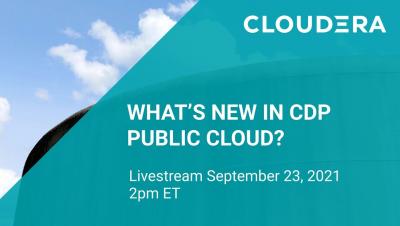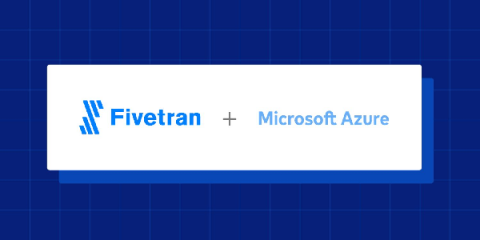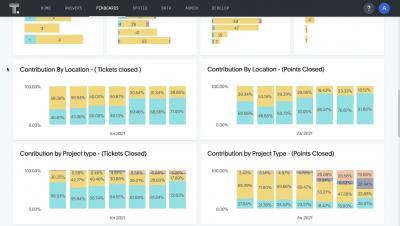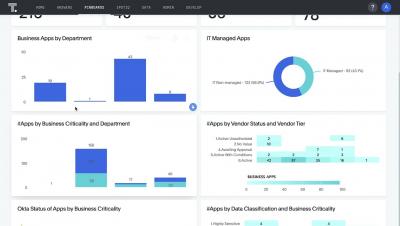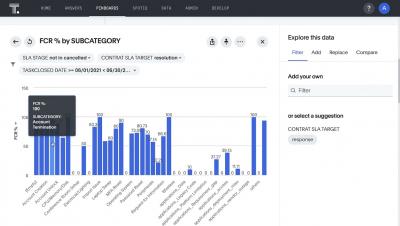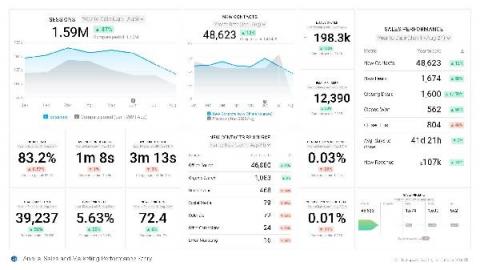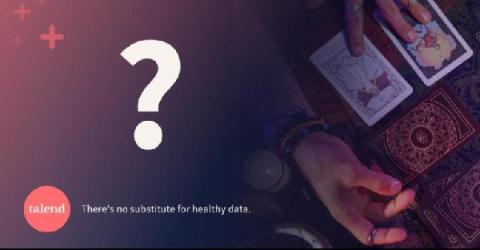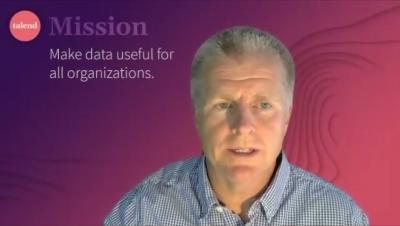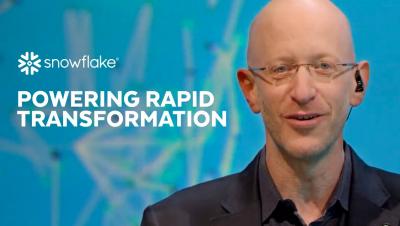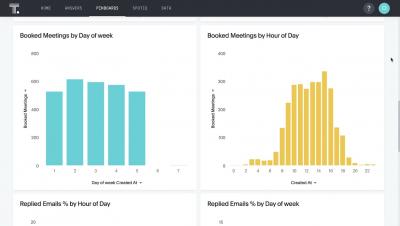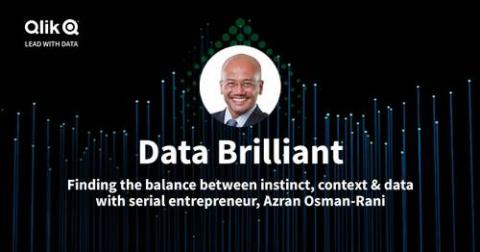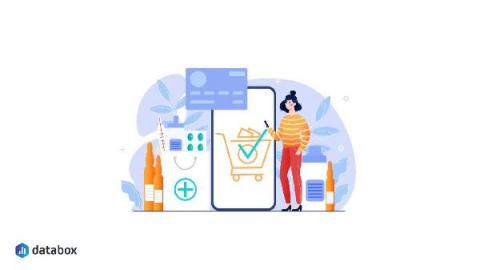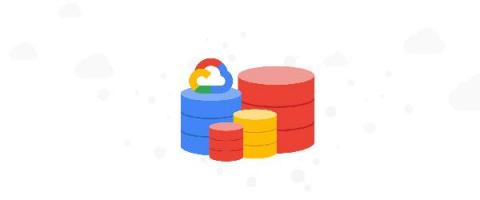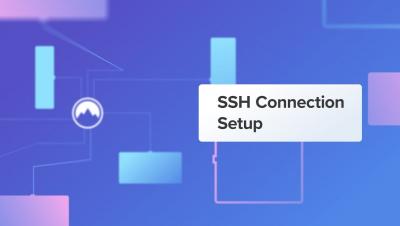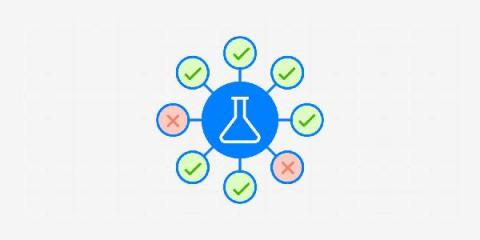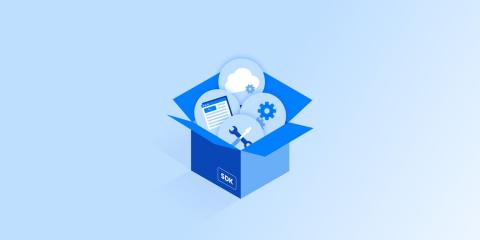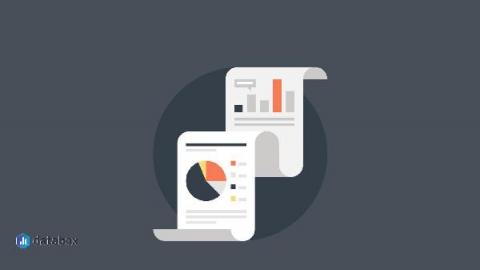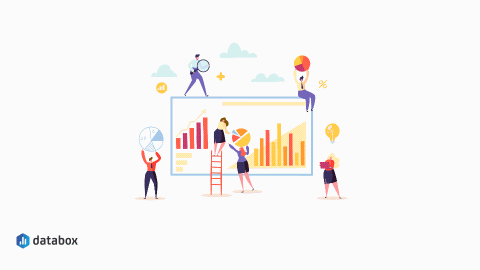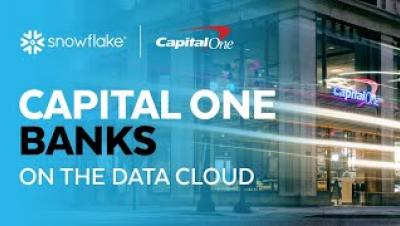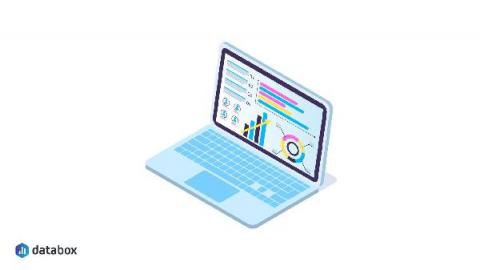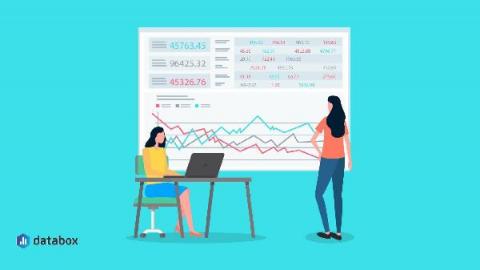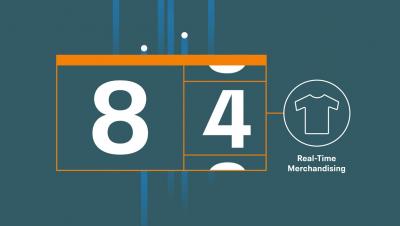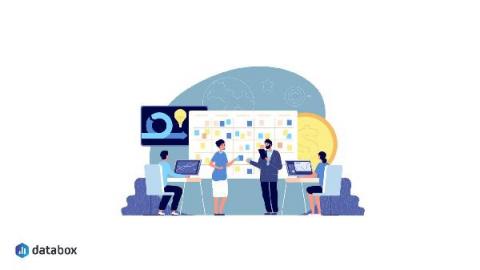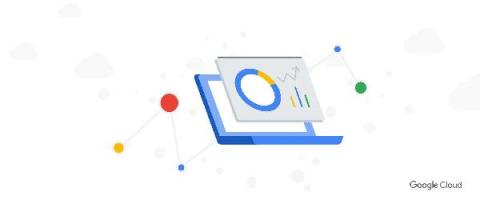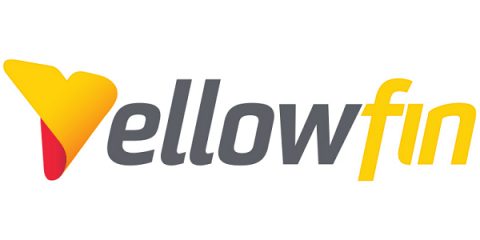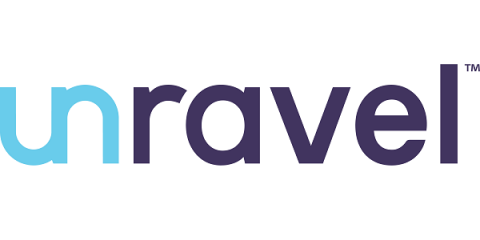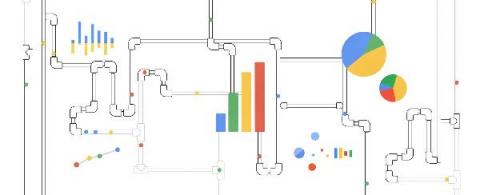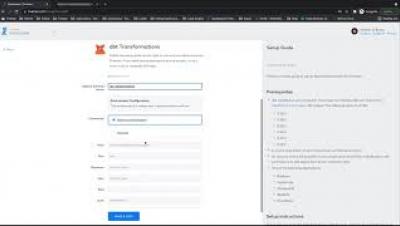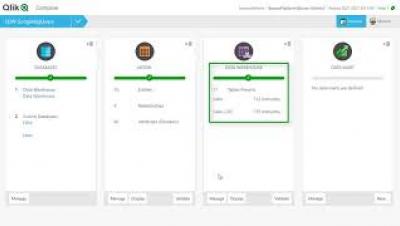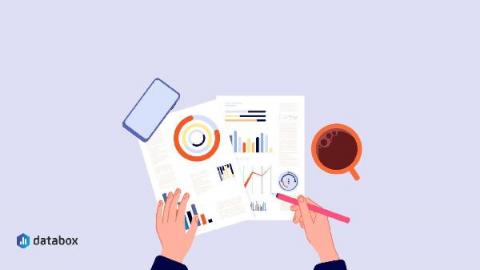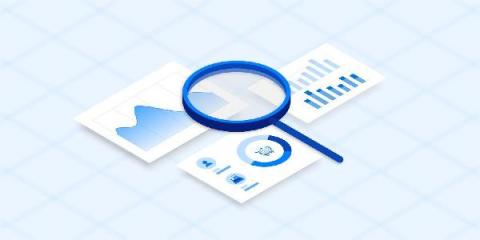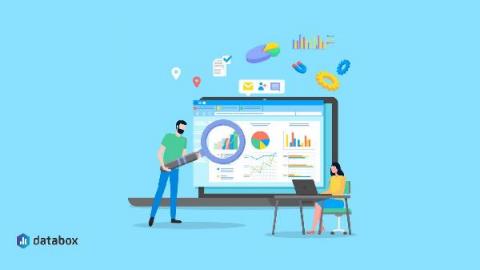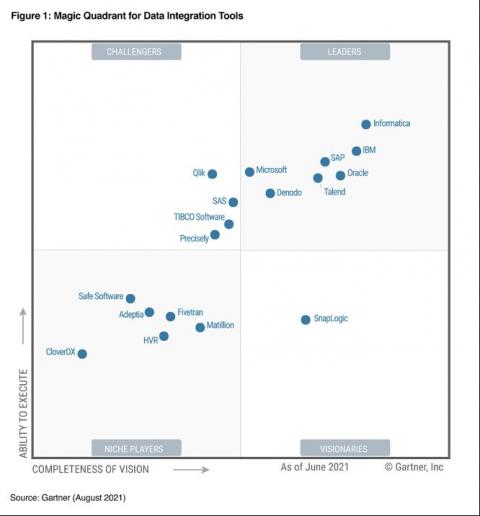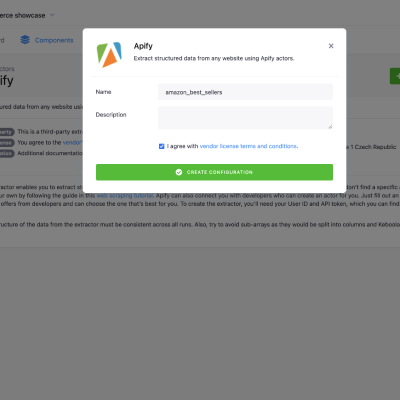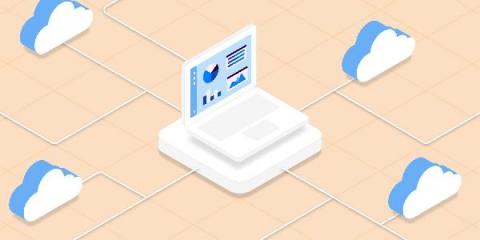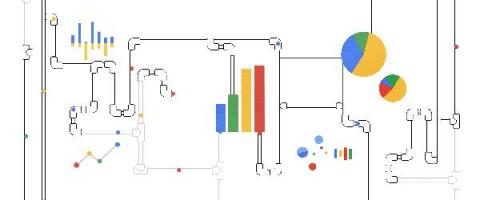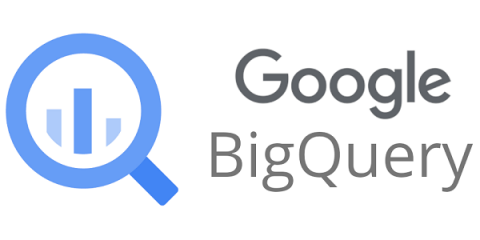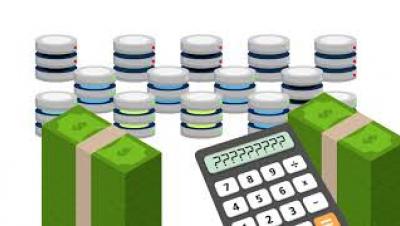Systems | Development | Analytics | API | Testing
September 2021
How Xplenty Helps Employers Keep Track of Time
Top Financial APIs
Building Machine Learning Pipelines with Real-Time Feature Engineering
Real-time feature engineering is valuable for a variety of use cases, from service personalization to trade optimization to operational efficiency. It can also be helpful for risk mitigation through fraud prediction, by enabling data scientists and ML engineers to harness real-time data, perform complex calculations in real time and make fast decisions based on fresh data, for example to predict credit card fraud before it occurs.
Migrate to CDP Private Cloud Base - A Step by Step Guide
Our recent blog discussed the four paths to get from legacy platforms to CDP Private Cloud Base. In this blog and accompanying video, we will deep dive into the mechanics of running an in-place upgrade from CDH5 or CDH6 to CDP Private Cloud Base. The overall upgrade follows a seven-step process illustrated below. In the video below we walk through a complete end to end upgrade of CDH to CDP Private Cloud Base.
Qlik Sense Enterprise SaaS - Impact Analysis
MLOps NYC: Building a Real-Time ML Pipeline with a Feature Store
Iguazio's Feature Store - Demo
Becoming Data-Driven & Improving Data Health: Talend CTO Krishna Tammana & StarCIO's Isaac Sacolick
ThoughtSpot Secures First 100 Enterprise SaaS Customers in 6 Months as Demand for Modern Analytics Cloud Accelerates
How to Write a Strategy Report? A Step-By-Step Guide for Marketers
How to Turn on Change Data Capture (CDC)
7 Tips to Improve ETL Performance
Serving the Public Through Data
Digital transformation has been talked about for many years, but the pandemic has accelerated the digital transformation journeys for many enterprises. Forced to adapt to changes in the business landscape and customer behavior, businesses have adopted more digital tools and technologies to drive innovation and increase resilience.
Closing the Gap Between the Digital Haves and Have-Nots
The digital race is on. To pull ahead of the pack, a company needs to know what to do with its data. Without a data-driven strategy, you’re bound to lose ground to competitors who apply their data to operational improvements, product development, go-to-market strategies, and the customer experience. It isn’t enough to collect, interpret, and act on the data. You have to do it fast.
Future of Data Meetup: CDP on Azure - Industrial Strength Data Engineering
9 Ways Agency Reporting Can Help Create Transparency with Clients and Boost Client Retention
How to get started with ThoughtSpot for Sales
Who are my top sellers? What kinds of deals have the highest close rate? How have our sales opportunities changed over time? As a sales leader, these are just some of the questions you ask yourself every day to keep your team on track. And the answers are in your data. Every form fill, cold call, and MQL is another data point you can use to assess the health of your sales organization.
Why You Need a Feature Store
Feature stores have arrived in 2021 as an essential piece of technology for operationalizing AI. Despite the enthusiasm for feature stores in high-tech companies, they are still absent from most legacy ML platforms and can be relatively unknown in many enterprise companies. We discussed how feature stores are critical to the data-first approach of next-gen ML platforms in our previous blog, but they are important enough to get their own treatment in a full article.
Customer Data Platform (CDP) vs. Reverse ETL
Understanding Microsoft ETL with Azure Data Factory
Group vs Fine-Grained Access Control in Cloudera Data Platform Public Cloud
Cloudera Data platform (CDP) provides a Shared Data Experience (SDX) for centralized data access control and audit in the Enterprise Data Cloud. The Ranger Authorization Service (RAZ) is a new service added to help provide fine-grained access control (FGAC) for cloud storage. We covered the value this new capability provides in a previous blog.
React and Respond in the Business Moment With Qlik Application Automation
Unless you’ve hidden under a rock for the past decade, you can’t have failed to notice that data in today’s enterprise is very much alive. It’s always moving, constantly changing, and we’re continually using it to create new business value. However, while data fluidity and visibility have blossomed, the opportunity to use that data to drive business actions seems to have withered in comparison.
Qlik App Automation - Brief Overview and Demo
How to Upgrade from CDH to CDP
13 Ways Small Businesses Can Leverage Instagram for Marketing
Avoid another analyst fire drill with the modern data and analytics stack
In a recent webinar by TDWI, 45% of analysts reported that “every day seems to be a different fire drill.” No surprise to anyone in the industry. As much as analysts need to be focused on more strategic tasks, their skills are frequently deployed to answer basic questions. Greater self-service capabilities for end-users would no doubt alleviate these fire drills, but this is not yet a reality for the majority of companies.
Top 7 Talend Alternatives and Competitors
Converged Analytics In Financial Services
In financial services, data has always been viewed as a strategic asset. To manage this data, organizations have invested heavily over several years and across a number of technology generations in the underlying data infrastructure. This approach has left a large data technology legacy along with silos of data linked to specific infrastructure and applications.
Fivetran Goes Multi-Cloud With Business Critical Plan
Run Fivetran on different clouds to gain flexibility and control while reducing costs.
Analytics vs. Reporting: What's the Difference?
Build your data analytics skills with the latest no cost BigQuery trainings
BigQuery is a fully-managed enterprise data warehouse that helps you manage and analyze your data with built-in features like machine learning, geospatial analysis, and intelligent caching for business intelligence. To help you make the most of BigQuery, we’re offering the following no cost, on-demand training opportunities.
Apache Hive vs. Apache HBase
Telecom Network Analytics: Transformation, Innovation, Automation
One of the most substantial big data workloads over the past fifteen years has been in the domain of telecom network analytics. Where does it stand today? What are its current challenges and opportunities? In a sense, there have been three phases of network analytics: the first was an appliance based monitoring phase; the second was an open-source expansion phase; and the third – that we are in right now – is a hybrid-data-cloud and governance phase. Let’s examine how we got here.
Terabytes of Data but Still No Good Insights?
In our modern digital society, data is abundant, and storage is affordable. Businesses, governments and even individuals can (and do) collect every transaction, click, swipe, location, message and attribute in their datasets. With just a few clicks on my smart device, I can review data on every place I’ve been, how much I spent, every step I took, what the weather was like and who I was with. Businesses collect the same abundance of data.
Martin Gardner - A Pattern for Salesforce Data Migration
How SMB Owners Build Performance Dashboards With Google Sheets Data
How Klearnow went from sleepless nights to a booming data business with ThoughtSpot
Sometimes I walk through the grocery store and marvel at the way customers float through the aisles, blissfully unaware of the logistical nightmare it probably took to stock the shelves. They have no idea how many people, systems, and modes of transportation it takes to make everything magically appear on their grocery shelves. But I do. As the Senior Director of Software Engineering at KlearNow, I spend my days preserving the bliss of those grocery shoppers.
How to Easily Apply Analytics to Product Development Management
The development of a digital product has been redefined to involve only 4 phases, as TCGen and Product Plan propose: However, having an easier-to-follow process is not the only improvement that you can implement: cost and time efficiency can be taken a huge step further when you incorporate analytics insights. So, with this infographic, we propose some tools that can help you analyze data sets to enrich the phases of each development process.
What Are the Limitations of Dashboards?
For modern businesses faced with increasing volumes and complexity of data, it’s no longer efficient or feasible to rely on analyzing data in BI dashboards. Traditional dashboards are great at providing business leaders with insights into what’s happened in the past, but what if they need actionable information in real time? What if they want to use their data to estimate what may happen in the future? Companies are taking notice.
Unlocking Data Literacy Part 1: How to Set Up a Data Analytics Practice That Works for Your People
Everything You Need to Know About API Integration
Speed Up Your Data Flow for Business Results
A slow car has never won a Formula One race. The Olympics doesn’t reward slow times in swimming, track or any other clock-timed sport. Likewise, slow data speeds don’t win over customers or colleagues in the real-time business world. Microsoft’s own research once reported that a person visiting a website on a connected device is likely to wait no more than 10 seconds to see it before moving to a competitor’s site.
Cloud Costs Through the Roof? Don't Worry - We've Got You Covered
Does it feel like your business is paying too much for cloud services? You are not alone. Cloud costs are expected to increase at a compound annual growth rate of 10.5% to 13.1% through 2025, according to the International Data Corporation (IDC). While getting a handle on those cloud costs may be tricky, you don’t have to worry — we’ve got you covered.
"So, How Do We Make This Work?" - Tracking Employee COVID Vaccination and Testing in As Little As 15 Minutes
With COVID-19’s ever-changing conditions – growing infection rates, shifting and new vaccine mandates, variant outbreaks and office closures and re-openings – HR has stepped up and taken on a significant role in helping organizations navigate every employee’s personal and work life needs. COVID-19 accelerated the evolution already underway in HR, with HR growing beyond being a policy and procedure hub into a strategic business partner.
Relational vs non-relational database: Which one should you use?
How to Make Your Data Ethical with Jack Berkowitz at ADP | Rise Of The Data Cloud
What's New in CDP Public Cloud? Hive and Impala Get a Facelift
ThoughtSpot SpotApp for Snowflake Performance and Consumption Analytics
Reporting to Investors: 6 Best Practices to Help Increase Funding
How to get started with ThoughtSpot for ServiceNow Analytics
Since the start of the pandemic, business demands on your IT team have skyrocketed. You need granular, actionable insights to keep up with the speed and volume of digital transformation projects and IT incidents occurring across your organization. Canned reports from SaaS-based systems like ServiceNow aren’t fundamentally built for analytics.
Fivetran Now Deploys on Microsoft Azure
Our joint customers can remain within Azure for all their cloud services, facilitating compliance and minimizing data movement costs.
Why Use Correlation Analysis in Data Analytics?
When organizations track metrics by the thousands, millions, or even billions, it’s helpful in many ways to understand which metrics have close relationships, meaning when one metric behaves in a certain way, one or more additional metrics can be expected to behave in a similar or opposite way.
State of the Reverse ETL
What's Next in the Data Cloud with Benoit Dageville & Christian Kleinerman | Snowflake Summit 2021
ThoughtSpot, ServiceNow, and Snowflake for IT Workload Management
ThoughtSpot, ServiceNow, and Snowflake for Business Application Management
ThoughtSpot, ServiceNow, and Snowflake for Operational Metrics
Agency Reporting: 9 Tips to Effectively Prove Your Value to Clients
Creating Dashboards from Multiple Data Sources - a Marketing Superpower
How to Build an Effective Enterprise Data Catalog
Learn how you can keep track of all of your organization’s data assets in one place
What is a Data Source?
What is the Best Fivetran Alternative?
Customer segmentation with Cosmo, Chief Destiny Officer
Do you ever feel like connecting with the right customer audience is just a matter of luck? We’ve met a CDO who leaves audience targeting up to chance. Cosmo, CDO is not a Chief Data Officer — he’s a Chief Destiny Officer. While we focus on data here at Talend, we’re trying to understand the 36% of business executives who say they don’t base the majority of their decisions on data.
Supercharge your Airflow Pipelines with the Cloudera Provider Package
Many customers looking at modernizing their pipeline orchestration have turned to Apache Airflow, a flexible and scalable workflow manager for data engineers. With 100s of open source operators, Airflow makes it easy to deploy pipelines in the cloud and interact with a multitude of services on premise, in the cloud, and across cloud providers for a true hybrid architecture.
Modernizing Your Cloud Platform for IT Agility and Efficiency
Businesses are increasingly embracing a cloud-first approach to increase market responsiveness and flexibility. The cloud-first approach refers to a cloud-like experience consisting of on-demand metered consumption of IT infrastructure, whether on the public cloud or inside private data centers. The rapidly evolving consensus among the tech leaders and vendors has led to an emergence of hybrid IT.
Qlik Sense Insight Advisor Improvements
[Inside Data] Driving Business Value from Digital Regulatory Reporting (Part 2)
How to Power Rapid Transformation in Financial Services with Snowflake | Snowflake Summit 2021
New Databox Integration: Analyze Your Website and App Analytics with Google Analytics 4
Fivetran Agrees to Acquire HVR, Raises Series D
Fivetran agrees to acquire HVR, the leader in enterprise database replication, and raises $565M in Series D funding.
6 Business Data Report Templates Every SMB Needs
Pushing Data to Hubspot from Your Warehouse
How to Implement Change Data Capture (CDC)
Apache Kafka Deployments and Systems Reliability - Part 1
There are many ways that Apache Kafka has been deployed in the field. In our Kafka Summit 2021 presentation, we took a brief overview of many different configurations that have been observed to date. In this blog series, we will discuss each of these deployments and the deployment choices made along with how they impact reliability.
ThoughtSpot SpotApp for Outreach
SpotApp for Google Analytics and Google Ads
Implementing Automation and an MLOps Framework for Enterprise-scale ML
With the explosion of the machine learning tooling space, the barrier to entry has never been lower for companies looking to invest in AI initiatives. But enterprise AI in production is still immature. How are companies getting to production and scaling up with machine learning in 2021? Implementing data science at scale used to be an endeavor reserved for the tech giants with their armies of developers and deep pockets.
Fivetran Achieves PCI DSS Level I Validation
Ecommerce customers can now connect Fivetran to PCI-validated data sources and transmit cardholder data to a PCI-validated destination.
Best Google Analytics Reports for Clients
ETL Pipeline vs. Data Pipeline: What's the Difference?
Pushing Data to Zendesk From Your Warehouse
5 Enterprise Resource Planning (ERP) Trends that Accelerate Digital Transformation
As businesses advance their digital transformation efforts, enterprise resource planning (ERP) systems are evolving — arguably as significantly as the shift from materials resource planning (MRP) to ERP. Just as businesses reimagined operations by leveraging advances in hardware and software in the 1980s, they’re now turning to next-generation ERP.
Data Relationship Status: It's Complicated
Whether you are single, married, in a civil partnership, engaged or focusing on friendships, there is one relationship we all have in common that plays out daily in modern life – and that is our relationship with data.
In the Quest for Success, Never Stop Being Curious With Data
My whole life I’ve been curious. You have to be, to become an entrepreneur. I’m curious about trends, about looking at data and finding patterns, which might show you where the next opportunity lies. And, as I discussed with Joe DosSantos in the latest episode of Data Brilliant, I’m a big believer in experimentation and learning by putting the data and analysis into practice.
Fivetran, SOC2 Type 2 and You
An in-depth discussion of Fivetran’s SOC 2 Type 2 compliance and Powered By Fivetran (PBF).
10 Common KPI Mistakes Companies Make and How to Avoid Them
How to Improve Your Business Bottom Line By Setting Goals and Alerts in Databox
Which Stitch Alternative Should You Choose? Top 7 Stitch Alternatives
How to Upload Data to Salesforce
Consumption-based Pricing: Ensuring Every Customer's Value and Success
Consumption-based, aka usage-based, pricing is hardly new. Anyone with an electricity, gas, or water bill knows that the amount you pay each month varies depending on your usage. More recently, disruptive companies have pushed other industries (transportation, hospitality, communications, and insurance) to transform by providing usage-based products and services via software applications. As consumers, we see this all around us, when we hail an Uber or choose a short-term rental on AirBnB.
"Leave Nothing for Tomorrow Which Can Be Done Today." Just Imagine If Abe Had FedRAMP SaaS!
When I began working at Qlik nearly seven years ago, it was fairly common for us to end our first meeting with a Federal agency with their team saying: “We need this.
Introducing Qlik Cloud Government - Analytics for U.S. Federal Sector
[Inside Data] Driving Business Value from Digital Regulatory Reporting (Part 1)
Snowflake's Data Cloud for Advertising in a Cookieless World | Snowflake Summit 2021
Live with Cloudera: Kafka Summit in Review
Troubleshooting Databricks
Introducing the Fivetran Terraform Provider
Integrate Fivetran into your infrastructure-as-code development.
SQL Server SSRS, SSIS packages with Google Cloud BigQuery
After migrating a Data Warehouse to Google Cloud BigQuery, ETL and Business Intelligence developers are often tasked with upgrading and enhancing data pipelines, reports and dashboards. Data teams who are familiar with SQL Server Integration Services (SSIS) and SQL Server Reporting Services (SSRS) are able to continue to use these tools with BigQuery, allowing them to modernize ETL pipelines and BI platforms after an initial data migration is complete.
Payment gateway analytics for payment service providers
Payment gateway analytics tracks the payment processing journey and related event data across all payment gateways. When used efficiently, payment gateway analytics can benefit businesses by providing insights into their revenues, payment trends, and customer behavior. Payment gateway analytics provides much needed visibility into the payments environment to enable the fast detection of transaction performance issues, anomalies or trends.
Which Tables in a Data Warehouse Use Change Data Capture
Are These the 6 Best Reverse ETL Vendors for 2021?
Living on the Edge: How to Accelerate Your Business with Real-time Analytics
Leveraging the Internet of Things (IoT) allows you to improve processes and take your business in new directions. But it requires you to live on the edge. That’s where you find the ability to empower IoT devices to respond to events in real time by capturing and analyzing the relevant data.
10 Common ERP Implementation Mistakes to Avoid
Analysts have found that roughly 50% or more enterprise resource planning (ERP) projects fail, and approximately half of all projects are considered challenging.
ETL vs ELT: 11 Critical differences
What Are the Tools and Techniques in Big Data?
Data is the new oil. It’s a phrase we’ve heard a lot in recent years, and it’s not hard to understand why. We’re generating more data every day than ever before, and companies are scrambling to find ways to store that information without running out of space.
How To Setup an SSH Tunnel Connection
Salesforce Heroku Connect
Building a Real-Time ML Pipeline with a Feature Store - MLOps Live #16
Applying the Scientific Method to Improve Business Intelligence
The scientific method is a proven route to successful, tested and verified improvement. Here’s how to combine it with BI.
Announcing the First Fivetran Software Development Kit
The new tools offer improved usability over the REST API for developers in Go.
6 Key Differences Between Data Analysis and Reporting
SEO KPI Reporting: 19 SEO KPIs You Should Include in Your Reports
Why Agencies and B2B Leaders Need Scheduled Performance Snapshots
5 Tips for Pushing Data from Your Warehouse to NetSuite
How To Get True ROI From Your Account-Based Marketing (ABM)
Account-based marketing, or ABM, is more often used as targeted demand generation—not one-to-one marketing. In a 2020 study of more than 300 organizations worldwide, Forrester found that “a significant number of respondents claimed they were using an ABM approach but weren’t doing what we would consider the basics of ABM, such as working with sales.”1 ABM isn’t just about assigning one siloed team the responsibility of targeting and revealing high-potential prospects.
Data Science And The Financial Industry
Qlik Sense SaaS in 60 - Custom Insight Advisor Responses and Edit Master Items in chart properties
Where Are My Views In Google Analytics 4? Everything You Need to Know About Filtering Data in GA4
Top 100 API Integrations
Operating Apache Kafka with Cruise Control
There are two big gaps in the Apache Kafka project when we think of operating a cluster. The first is monitoring the cluster efficiently and the second is managing failures and changes in the cluster. There are no solutions for these inside the Kafka project but there are many good 3rd party tools for both problems. Cruise Control is one of the earliest open source tools to provide a solution for the failure management problem but lately for the monitoring problem as well.
Fivetran AWS Customers Can Now Manage Credential Encryption
With customer-managed keys, Fivetran Business Critical users running AWS gain full control over credential encryption.
Client Reporting 101: Tips and Best Practices for Agencies and Freelancers
The Pros and Cons of Application Software Integration
The 7 Critical Differences Between DynamoDB vs MongoDB:
Use Cases for Reverse ETL
Enabling Multi-User Fine-Grained Access Control for Cloud Storage in CDP
Shared Data Experience (SDX) on Cloudera Data Platform (CDP) enables centralized data access control and audit for workloads in the Enterprise Data Cloud. The public cloud (CDP-PC) editions default to using cloud storage (S3 for AWS, ADLS-gen2 for Azure). This introduces new challenges around managing data access across teams and individual users. To solve these challenges for S3 and ADLS-gen2, Cloudera has introduced a new service — the Ranger Authorization Service (RAZ).
Cloudera and NVIDIA Help IRS Fight Fraud, Safeguard Taxpayers
Across the federal government, agencies are struggling to identify, organize, analyze, and act on troves of data. It’s a problem that leaders are working actively to tackle, but they’re in a race against immeasurable volumes of data that is continuously being generated in perpetuity in stores known and unknown. At the Internal Revenue Service, decades’ worth of data exceeds even the most cutting-edge processing capabilities.
Streaming Analytics with SQL Stream Builder
How to (Re)Use dbt: Guiding Rapid MDS Deployments
Learn how off-the-shelf, open-source dbt packages make data modeling frictionless.
15 Essential Project KPIs That Benefit the Entire Team
Ad agencies choose BigQuery to drive campaign performance
Advertising agencies are faced with the challenge of providing the precision data that marketers require to make better decisions at a time when customers’ digital footprints are rapidly changing. They need to transform customer information and real-time data into actionable insights to inform clients what to execute to ensure the highest campaign performance.
What Scenario Should You Use CDC for?
What is Data Mapping?
Value Proposition of the Cloudera Operational Database over Legacy Apache HBase Deployments
The CDP Operational Database (COD) builds on the foundation of existing operational database capabilities that were available with Apache HBase and/or Apache Phoenix in legacy CDH and HDP deployments.
Bringing empathy to numbers with data storytelling
Spark Troubleshooting Solutions - DataOps, Spark UI or logs, Platform or APM Tools
Spark is known for being extremely difficult to debug. But this is not all Spark’s fault. Problems in running a Spark job can be the result of problems with the infrastructure Spark is running on, inappropriate configuration of Spark, Spark issues, the currently running Spark job, other Spark jobs running at the same time – or interactions among these layers.
Troubleshooting Apache Spark
14 Best CRM Reports You Can Build from Your CRM Data (Sourced from 50 Experts)
Optimizing your BigQuery incremental data ingestion pipelines
When you build a data warehouse, the important question is how to ingest data from the source system to the data warehouse. If the table is small you can fully reload a table on a regular basis, however, if the table is large a common technique is to perform incremental table updates. This post demonstrates how you can enhance incremental pipeline performance when you ingest data into BigQuery.
Reverse ETL to NetSuite
Supporting Transformation with an Integrated Data Platform. Three Common Questions Answered.
In recent years there has been increased interest in how to safely and efficiently extend enterprise data platforms and workloads into the cloud. CDOs are under increasing pressure to reduce costs by moving data and workloads to the cloud, similar to what has happened with business applications during the last decade. Our upcoming webinar is centered on how an integrated data platform supports the data strategy and goals of becoming a data-driven company.
Let's Talk CDP Private Cloud
Fivetran Transformations with dbt
Data And The Music Industry | Rise Of The Data Cloud
Early-stage growth: Why shifting the founder mindset is critical to acquiring your first 10 customers
Growth. It’s the mountain every startup founder must learn to climb in order to run a successful business. And as with any great mountain, the journey to the top never feels more daunting than at the base. How your startup earns its first 10 customers will set the tone for the rest of the trek and determine how fast your team reaches the summit — if at all.
Salesforce Rest API
5 Tips for Pushing Data from Your Warehouse to Intercom
The role of a CDO with Cosmo, Chief Destiny Officer
Have you ever wished you had a crystal ball? We tracked down a CDO who actually uses one. See, Cosmo, CDO is not a Chief Data Officer — he’s a Chief Destiny Officer. We’re all about data at Talend, but sometimes it’s good to see things from another perspective. We sat down with Cosmo to ask him about his job, his background, and his methods.
Everything as a Service: Unlock Business Outcomes
In the wake of COVID-19, we saw a significant shift toward as-a-service offerings, something we haven’t seen in years. From conversations with CIOs over the past 12 months, we know they are looking for the flexibility, efficiencies and cost savings they get from the as-a-service model. This is especially important to them as they evolve their business models in a hybrid IT direction and become consumers of IT.
Data Warehouse vs Database: What is the difference and which one should you choose?
Building a Cloud Based Data Warehouse on Google Big Query Using Qlik Compose
9 Vital Small Business Financial Reports for Your Organization
Change Data Capture: CDC for E-Commerce
Spectacular growth: Beaumotica accelerates expansion with data-driven insights from Talend
Beaumotica combines smart lighting, design, and top brands to create the perfect mood and atmosphere for any room. And with help from Talend, the company can now combine data, analytics, and automation to optimize business decisions and accelerate growth. Last year alone the company tripled its business and expanded into new territories across Europe. Based in The Netherlands, Beaumotica has been growing steadily since 2007.
Fivetran Adds Private Networking Support for AWS Customers
Fivetran Business Critical secures data traffic with AWS PrivateLink.
How to Track Conversions with Google Analytics 4: 7 Best Practices
5 Tips for Pushing Data from Your Warehouse to SAP
6 Database Schema Designs and How to Use Them
The Role of the Empowered Citizen Integrator in Democratizing Technology Across the Enterprise
With Stitch, Simba is losing no sleep over aggressive growth plans
“If we didn’t have Stitch, we would have to recruit and hire data engineers, buy space for hundreds of millions of rows that we’re sinking into the database, and on and on. For us, Stitch is essential.” –Tomasz Eitner, BI and Data Analyst, Simba Sleep Simba Sleep has always been a data-driven company. Before the firm was even formally launched, the founders purchased research profiles from more than 10 million sleepers—including 180 million body profile data points.
How Digital Transformation Accelerates Finance Analytics
Integrating digital technologies into every area of your business can vastly improve your finance analytics.
New: Create Custom Metrics for Pipedrive CRM, HubSpot CRM, and HubSpot Marketing with Query Builder
How to connect Mongo DB to Heroku Postgres
Our reflections on the 2021 Gartner Magic Quadrant for Data Integration Tools
“The data integration tool market is seeing renewed momentum, driven by requirements for hybrid and multi-cloud data integration, augmented data management, and data fabric designs.” This is what Gartner assesses in its latest Magic Quadrant for Data Integration Tools* report. And that assessment makes perfect sense. Data is the lifeblood of an organization.
Optimizing Cloudera Data Engineering Autoscaling Performance
The shift to cloud has been accelerating, and with it, a push to modernize data pipelines that fuel key applications. That is why cloud native solutions which take advantage of the capabilities such as disaggregated storage & compute, elasticity, and containerization are more paramount than ever. At Cloudera, we introduced Cloudera Data Engineering (CDE) as part of our Enterprise Data Cloud product — Cloudera Data Platform (CDP) — to meet these challenges.
Why we need more data journalists, not data scientists
Migrating Data Pipelines from Enterprise Schedulers to Airflow
At Airflow Summit 2021, Unravel’s co-founder and CTO, Shivnath Babu and Hari Nyer, Senior Software Engineer, delivered a talk titled Lessons Learned while Migrating Data Pipelines from Enterprise Schedulers to Airflow. This story, along with the slides and videos included in it, comes from the presentation.
Automated Competition Scraping with Apify and Keboola
The Data Chief Live: What to Do About Too Many BI Tools
Industry Leaders: Build a Multi-Cloud Modern Data Stack
Four technology leaders discuss the modern data stack — and agree that multi-cloud is the best option.
How to load Salesforce data into BigQuery using a code-free approach powered by Cloud Data Fusion
Organizations are increasingly investing in modern cloud warehouses and data lake solutions to augment analytics environments and improve business decisions. The business value of such repositories increases as customer relationship data is loaded and additional insights are generated.
BigQuery Admin reference guide: Recap
Over the past few weeks, we have been publishing videos and blogs that walk through the fundamentals of architecting and administering your BigQuery data warehouse. Throughout this series, we have focused on teaching foundational concepts and applying best practices observed directly from customers. Below, you can find links to each week’s content: Query Processing : Ever wonder what happens when you click “run” on a new BigQuery query?
How to Operationalize your Data Warehouse with Reverse ETL
Dimagi implements Passerelle Data Rocket to accelerate state and local COVID-19 response
Frontline healthcare providers don’t always have access to the latest and greatest technology. But when they are trying to fight a global pandemic with pen-and-paper tracking systems, something has to change. Dimagi is a tech company on a mission: to deliver scalable digital solutions for organizations to amplify their frontline impact.
When Data Redefines Companies
The more an enterprise wants to know about itself and its business prospects, the more data it needs to collect and analyze. Additionally, the more data it collects and stores, the better its ability to know customers, to find new ones, and to provide more of what they want to buy. Sounds simple, but a surprising majority of U.S.










